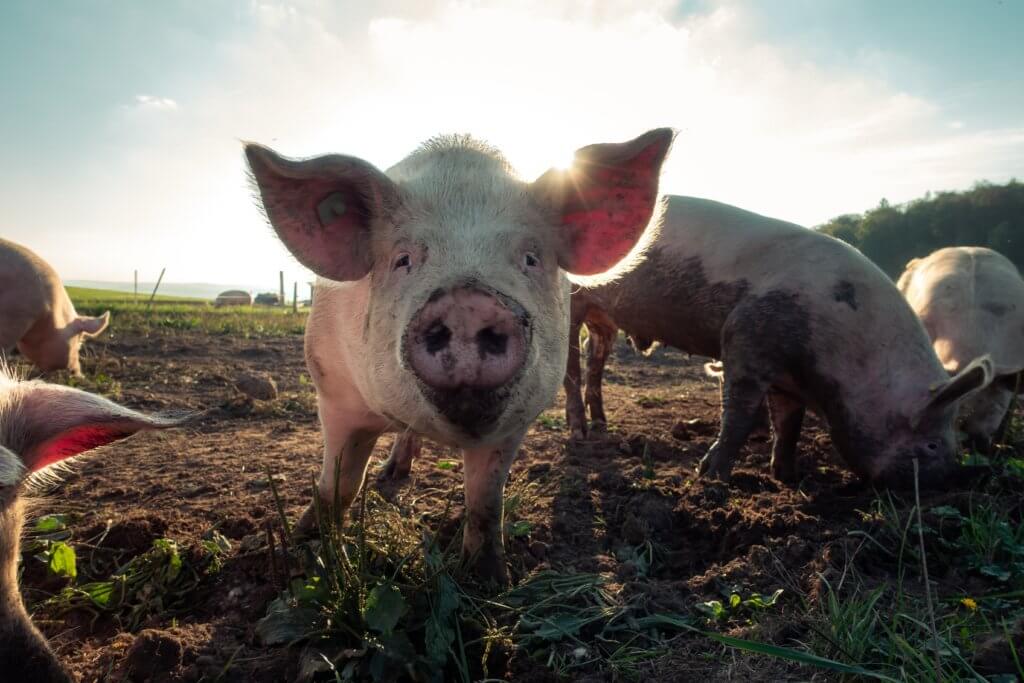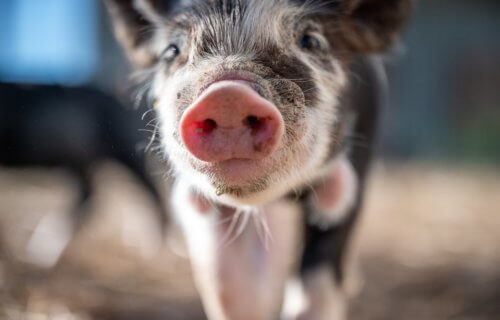LINCOLN, Neb. — Scientists at the University of Nebraska-Lincoln are one step closer to producing a long-lasting swine flu vaccine that’s safe and effective, after successful completion of a long-term live hog experiment. Swine flu isn’t just a problem for the pork industry, but for human health as well. Pigs can act as “mixing vessels” that make different swine and bird flu strains easily transmissible to humans.
In 2009 during the swine flu pandemic and emergence of the H1N1 strain, the virus originated in pigs before infecting close to a fourth of the entire world during the first year. It led to almost 12,500 U.S. deaths and nearly 575,000 around the world, according to the Centers for Disease Control and Prevention.
“Considering the significant role swine play in the evolution and transmission of potential pandemic strains of influenza and the substantial economic impact of swine flu viruses, it is imperative that efforts be made toward the development of more effective vaccination strategies in vulnerable pig populations,” says Erika Petro-Turnquist, a doctoral student and lead author of the study, in a university release.
Eric Weaver, associate professor and director of the Nebraska Center for Virology, leads the lab doing this work. He and his team have been using Epigraph, a data-based computer technique co-developed by Bette Korber and James Theiler of Los Alamos National Laboratory. The researchers wanted to use the technology to develop a broad-based vaccine because of how difficult influenza can be to prevent, thanks to rapid mutations.
Right now, pork producers are trying to manage the swine flu by using vaccines that are already commercially available. These vaccines come from whole inactivated viruses and weakened versions of live viruses. As of 2008, around half of the vaccines used in the United States were custom-made for certain herds. This is an expensive, time-consuming, and ineffective strategy because of how quickly the swine flu changes over time.

The Epigraph algorithm makes it possible for scientists to analyze numerous amino acid sequences among hundreds of different viral variants in order to create a vaccine “cocktail” of the three most common epitopes, which are parts of viral proteins that cause the immune system to react. This could soon lead to a universal flu vaccine, which is one that is at least 75 percent effective and protects against multiple types of flu viruses for at least a year in all age groups, according to the National Institutes of Health.
“The first epitope looks like a normal influenza vaccine gene, the second one looks a little weird and third is more rare,” explains Weaver. “We’re reversing the evolution and bringing these sequences that the immune system recognizes as pathogens back together. We’re computationally re-linking them and that’s where the power of this vaccine is coming from, that it provides such good protections against such a wide array of viruses.”
In another effort to boost efficacy, the vaccine is delivered via adenovirus, which is a common virus that causes cold-like symptoms. It’s used to trigger another immune reaction by mimicking a natural infection.

To put things to the test, Weaver and the team observed 15 Yorkshire cross-bred female pigs over a period of around six months, the typical lifespan of a market hog. The hogs were split into three groups: one that received the Epigraph vaccine, another that received a while inactive virus vaccine, and the last group which received a saline solution to act as a control. At three weeks, the pigs received their initial vaccine, and a booster shot three weeks after that. Antibody levels and T-cell responses were measured weekly for the first month and every 30 days after that. At six months, they were then exposed to a strain of swine flu different than the ones found in the vaccine.
The Epigraph group had more long-lasting antibody and T-cell responses to the vaccines. After exposure to the virus, these hogs were significantly better protected against the disease, displaying stronger immune responses and less viral shedding as well as reduced infection symptoms.
“Those pigs weighed about five pounds when we vaccinated them and by the end of the study, six months later, they were over 400 pounds,” says Weaver. “It’s kind of amazing that this vaccine would maintain itself over that rate of growth. It continues to expand as the animal grows.”
Weaver’s team looks ahead to taking things to the next step by conducting larger studies and possibly partnering commercially to get the product on the market.
“The more times we do these studies, the more confident we get that this vaccine will be successful in the field,” Weaver concludes.
The findings are published in the journal Frontiers in Immunology.
You might also be interested in:
- Exercising right after getting a COVID or flu vaccine leads to more antibodies
- Flu virus can travel on dust, other non-respiratory particles, breakthrough study shows
- Wild pigs are having a bigger climate change impact than one million cars

